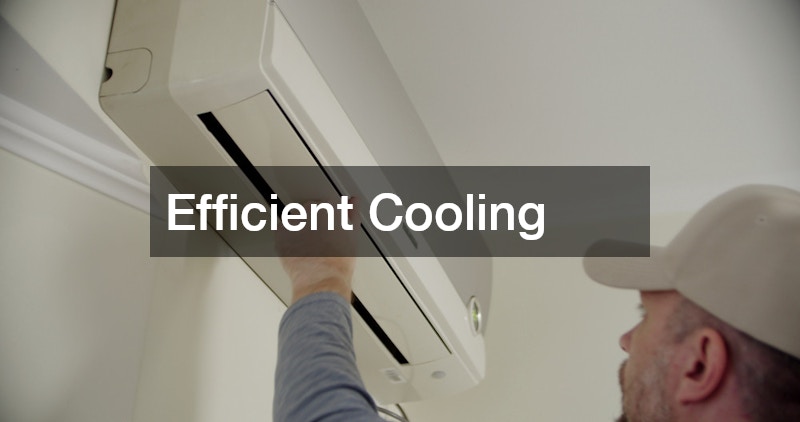
The rapid evolution of technology is revolutionizing various industries, reshaping how they operate and interact with consumers. From building and healthcare to manufacturing and agriculture, technological advancements are paving the way for more efficient solutions, cost-effectiveness, and enhanced user experiences. In this article, we will delve into some sectors significantly impacted by these innovations, exploring how composite deck builders to air conditioning contractors are transforming their fields. As digital transformations continue to unfold, industries are witnessing unprecedented capabilities, driving them to adapt to future challenges and opportunities.
Smarter Decking
Modern advancements in construction materials and design have led to the emergence of smarter decking solutions. Composite deck builders are leveraging new materials that promise enhanced durability and minimal maintenance compared to traditional wood decks. These products not only offer aesthetic benefits but also provide a sustainable solution by utilizing recycled materials.
Composite materials utilized by deck builders are resistant to harsh weather conditions, making them an ideal choice for sustainable outdoor solutions. These decks do not warp or rot, reducing the need for frequent replacements and contributing to overall cost savings. With anti-slip surfaces and vibrant color options, they cater to both safety and aesthetic desires of modern homeowners.
Innovations in technology have also enabled easier installation processes. Builders now have access to advanced tools and software that aid in designing custom decks, ensuring precise measurements and seamless assembly. These smart decking systems signify a shift towards more innovative and eco-friendly outdoor living spaces.
Modern Dentistry

The field of dentistry is witnessing remarkable technological advancements that are transforming patient care and treatment outcomes. From digital imaging to laser treatments, dentists are equipped with innovative tools that enhance accuracy and patient comfort. These technological strides have made dental procedures less invasive and more efficient.
Digital dental imaging allows dentists to diagnose issues with precision, leading to more accurate treatment planning. This technology reduces the need for multiple visits and streamlines the fabrication of dental prosthetics. With tools like CAD/CAM, dentists can offer same-day restorations, improving convenience for patients.
The incorporation of laser technology in dentistry has revolutionized treatments for soft tissue, allowing for quicker healing and reduced discomfort. These technologies emphasize the shift towards minimizing patient downtime and enhancing overall dental care. The ease and accessibility brought by these advancements are reshaping the dentist’s role in delivering comprehensive healthcare.
Better Materials
Innovations in material science are crucial for advancements across various sectors, particularly in medical and industrial applications. Medical tape manufacturers, for instance, are utilizing new materials that offer enhanced adhesiveness and comfort for patients. These improvements ensure the safety and efficacy of medical supplies in a clinical setting.
New materials in the medical sector are also developing safer and more sustainable products. For example, tapes that are hypoallergenic and biocompatible reduce the risk of skin irritation or allergic reactions, thus improving patient care. The development of biodegradable options also addresses environmental concerns associated with traditional medical waste.
Manufacturers are investing heavily in research and development to innovate materials that can withstand various conditions while ensuring optimal performance. The advancements in this field not only serve the healthcare industry but overflow into other sectors such as electronics and aeronautics, where material reliability is paramount.
Faster Production

The demand for rapid production processes has led to significant shifts in manufacturing strategies. Contract manufacturing is seeing a technological overhaul, focusing on automation and streamlined production lines. These changes are helping businesses meet consumer expectations for quick turnaround times without compromising quality.
Automation plays a critical role in maximizing efficiency and minimizing human error within production facilities. Robotics and advanced manufacturing technologies allow for 24/7 production cycles, which is pivotal in industries with high demand. These advancements aid contract manufacturers in providing cost-effective solutions, ultimately benefiting end customers with shorter lead times.
The integration of AI and machine learning further boosts the capabilities of contract manufacturing, optimizing resource allocation and predictive maintenance of machinery. This strategic approach not only enhances productivity but also creates opportunities for customized production to cater to diverse market needs.
New Skill Training
As technology progresses, new skill sets and training opportunities are emerging to accommodate the evolving job market. Welding apprenticeships are incorporating cutting-edge technologies, ensuring that trainees are equipped with the latest industry practices. These programs are pivotal in maintaining a skilled workforce for the manufacturing sector.
Apprenticeship programs now include training on advanced welding equipment and techniques that were previously unavailable. By aligning their curriculum with modern welding methodologies, these programs help bridge the gap between traditional practice and new-age technologies. This holistic approach ensures that apprentices gain valuable hands-on experience that reflects current industry standards. In addition, mentors can provide real-time feedback using digital monitoring tools, which track performance and highlight areas for improvement efficiently.
Moreover, the incorporation of virtual reality and simulation technology in training programs allows aspiring welders to practice in a controlled environment. Such immersive experiences are beneficial for understanding complex welding scenarios without the risks associated with real-world errors, enabling a competent workforce ready to tackle industry demands. These technologies also facilitate remote learning, allowing trainees in different locations to access the same high-quality instruction, broadening opportunities and helping the industry meet growing labor demands effectively.
Smart Lawn Tools

The lawn care service industry is benefitting from technological progress with the advent of smart lawn tools. These innovations include automated lawn mowers and watering systems designed to enhance efficiency and reduce labor-intensive tasks. As these intelligent tools evolve, they are transforming traditional lawn maintenance practices.
Smart lawn mowers, equipped with GPS and sensors, offer precise navigation and cutting capabilities. This ensures consistency in lawn care while minimizing the need for human intervention. By adopting these technologies, lawn care services can optimize resource management and focus on providing better customer experiences. Advanced scheduling software allows teams to coordinate multiple properties efficiently, reducing downtime and maximizing productivity.
Additionally, advanced irrigation systems are integrated with weather data to personalize watering schedules, promoting water conservation. This not only benefits the environment but also results in a healthier lawn by preventing under or overwatering. Drone monitoring and soil sensors provide real-time data on lawn health, enabling proactive care. The combination of these technological advancements signifies a comprehensive approach to modern lawn maintenance, allowing services to deliver precise, sustainable, and high-quality results that meet client expectations.
Cleaner Air Tech
In the era of environmental consciousness, cleaner air technology is becoming a priority across multiple sectors. Air quality testing has become more sophisticated, providing detailed insights and data on pollutants present in different environments. These technologies are key to informing strategies for improving air quality and public health.
Advanced air filtration systems are now being integrated into commercial and residential buildings, ensuring clean and breathable indoor environments. This is crucial for reducing the risk of respiratory ailments, particularly in urban areas with heavy air pollution. These systems are often complemented by smart sensors that monitor the air continually, offering real-time updates or alerts. Portable monitoring devices also allow organizations to measure air quality in different locations, helping identify hotspots of pollution and adjust interventions as needed.
The application of AI in air quality testing allows for more detailed analysis and implementation of corrective actions. With data driving decisions, stakeholders are better equipped to implement strategies that mitigate pollution sources and enhance the overall air quality of the communities they serve. Predictive analytics further allow businesses and municipalities to anticipate seasonal or industrial impacts on air quality, enabling proactive solutions and more efficient allocation of resources. These advancements not only protect public health but also support sustainability initiatives and regulatory compliance.
Efficient Cooling

The demand for efficient cooling solutions is more significant than ever, especially in regions experiencing extreme weather conditions. Air conditioning contractors are at the forefront of integrating advanced cooling technologies that ensure optimal energy use and performance efficiency. These developments prioritize both environmental sustainability and consumer comfort.
Modern air conditioning systems capitalize on energy-efficient compressors and refrigerants with low global warming potential. These advancements contribute to lowering electricity consumption while reducing the carbon footprint. Consequently, consumers can enjoy decreased utility bills and more environmentally friendly solutions. High-efficiency HVAC units now include variable-speed fans and adaptive airflow systems, which adjust automatically to changing temperatures, further enhancing energy savings and system performance.
Moreover, smart thermostats and IoT-enabled devices allow users to control and monitor their air conditioning systems remotely. This capacity to make real-time adjustments based on environmental conditions boosts system efficiency, ensuring cooling comfort without unnecessary energy consumption. Predictive maintenance features also alert homeowners and contractors to potential issues before they become costly problems, extending the life of the system and ensuring consistent performance. Together, these innovations provide a balance of comfort, reliability, and sustainability for modern cooling needs.
Improved Pet Care
The pet care industry is innovating quickly to enhance the health and well-being of companion animals. Veterinarians are incorporating new diagnostic tools and treatment options enabled by technological progress. These advancements permit more personalized and effective care, transforming the way pet health is managed.
Innovations in veterinary diagnostic tools include portable imaging devices and in-house laboratory equipment, enabling quicker and more accurate diagnoses. This improves the overall treatment process, allowing veterinarians to formulate comprehensive care plans tailored to each pet’s specific needs. Telemedicine platforms further expand access to veterinary expertise, allowing remote consultations for minor concerns or follow-up care without requiring in-person visits.
Moreover, wearable technology for pets, such as activity trackers and health monitors, allows owners and veterinarians to keep track of an animal’s wellness over time. These tools provide critical insights into pets’ daily activities and behaviors, enabling timely interventions and promoting overall health management. Advanced software platforms also help veterinarians track medical histories, vaccination schedules, and treatment outcomes efficiently, ensuring continuity of care and better long-term monitoring. Collectively, these innovations are enhancing preventive care, improving treatment success rates, and allowing veterinarians to provide more proactive and informed services.
Quicker Fixes
The agricultural sector demands quick and reliable repair solutions to maintain productivity and minimize downtime. The role of tractor repairs has evolved with the introduction of digital diagnostic tools and mobile service technologies. These advancements enable faster problem identification and efficient repair processes, which are essential for maintaining the pace of agricultural operations.
Digital diagnostic tools offer on-the-spot analysis of tractor issues, allowing technicians to tackle problems with minimal lag time. This decreases equipment downtime and ensures that farmers can continue working without prolonged interruptions. Mobile service units further enhance this efficiency, providing onsite repairs and reducing the need to transport machinery to service locations. Additionally, predictive maintenance software now allows operators and technicians to monitor tractor performance over time, flagging potential issues before they become critical problems.
The combination of these technological advancements ensures that repair processes are not only quicker but also more reliable. With real-time monitoring, technicians can schedule preventive repairs during downtime, reducing unexpected breakdowns during peak agricultural seasons. This guarantees consistent operational capabilities, essential for adhering to agricultural schedules that depend heavily on timing and conditions. As a result, farmers benefit from increased productivity, reduced costs, and greater confidence in their machinery’s performance.
The advent of technology in various industries is transforming the way businesses operate, offering new solutions and breaking traditional barriers. Whether through advancements in material applications, or automation in manufacturing, these changes have a profound impact on efficiency and sustainability. Composite deck builders embrace eco-friendly materials; dentists employ innovative diagnostic tools for better patient care; and manufacturers use cutting-edge technologies to enhance production lines.
In agriculture and pet care, technology offers practical solutions that aid in maintaining animal health and improving farming productivity. Welding apprenticeships, on the other hand, focus on equipping trainees with the latest industry tools and skills, paving the way for future-ready professionals. Similarly, industries such as lawn care and air quality testing are witnessing transformations through enhanced tools and data-driven strategies.
These ongoing advancements highlight a commitment to improving efficiency, safety, and sustainability across industries. As technology progresses, its integration promises to solve existing challenges while unlocking new opportunities for growth and innovation. Embracing these changes is imperative for industries aiming to remain competitive and relevant in an ever-evolving landscape. The future promises continued advancements in technology that will only further revolutionize these sectors and beyond.



